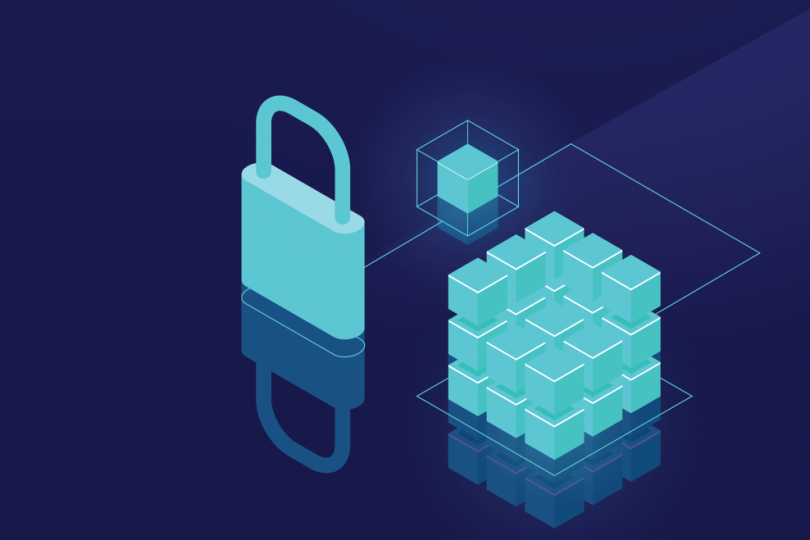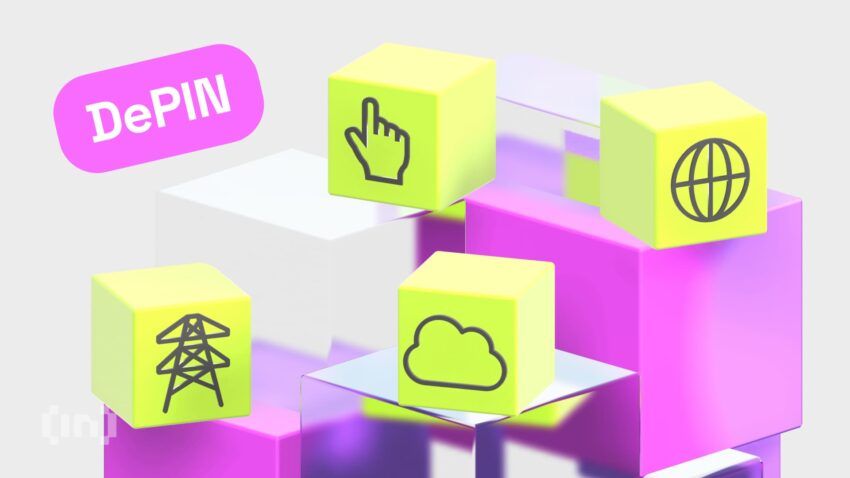Blockchain technology has been transforming industries by providing a decentralized, secure way to manage digital transactions and data. However, as the world increasingly relies on blockchain, the need for enhanced security solutions is more critical than ever. This is where DePIN (Decentralized Physical Infrastructure Networks) comes into play, representing a crucial leap in the blockchain security evolution. By combining decentralized digital and physical infrastructures, DePIN introduces a new layer of security, addressing some of blockchain’s most significant challenges. In this blog, we will explore how Blockchain Security Evolution with DePIN is reshaping the future of secure networks.
Understanding Blockchain Security
To understand how DePIN contributes to blockchain, it’s essential first to review blockchain security itself. Blockchain relies on decentralized nodes to verify and record transactions. This makes it highly resistant to tampering, but the system still faces security challenges, particularly as blockchain networks scale.
How Blockchain Works
At its core, blockchain uses a decentralized ledger that relies on cryptographic techniques to secure data. The use of cryptographic hashing and decentralized consensus ensures that once data is added, it cannot be altered without the consensus of the network. This protects against unauthorized modifications and makes the network incredibly resilient.
Current Blockchain Security Challenges
While blockchain’s design is inherently secure, it is not invincible. As blockchains grow larger and more complex, new vulnerabilities emerge:
- Scalability issues: Managing the growing size of blockchains can slow down network performance, leading to bottlenecks and security risks.
- 51% attacks: If one entity controls more than 50% of the network’s computing power, they could potentially manipulate the blockchain’s transactions.
- Privacy concerns: Traditional blockchain networks can expose transactional data, which can compromise user privacy.
This is where DePIN enters the picture, enhancing the security and scalability of blockchain networks.
What is DePIN?
DePIN (Decentralized Physical Infrastructure Networks) combines blockchain’s digital decentralization with a distributed physical infrastructure. While blockchain relies on decentralized nodes to validate transactions, DePIN extends this concept to the physical infrastructure that supports the network, such as data storage facilities, servers, and other hardware components.
How DePIN Operates
DePIN distributes physical resources across various independent operators, ensuring that no single entity controls the network’s entire infrastructure. By decentralizing physical assets in tandem with digital processes, DePIN creates a robust, secure environment for data processing and storage.
DePIN vs. Traditional Decentralized Networks
Traditional decentralized networks focus on securing the digital aspects of blockchain, such as the ledger and transaction verification. DePIN goes a step further by decentralizing the infrastructure that runs these networks, enhancing security and reducing the risk of single points of failure.
How DePIN Enhances Blockchain Security
The blockchain security evolution with DePIN represents a significant upgrade in how decentralized networks protect themselves from external threats. Here’s how DePIN boosts security:
Decentralized Infrastructure for Robust Security
DePIN ensures that blockchain networks are not dependent on a centralized infrastructure that could be compromised. By distributing physical assets across independent operators, DePIN creates a network that is far less vulnerable to attacks.
For example, in a traditional network, if a hacker targets a centralized data center, they could compromise the entire network. In a DePIN-powered network, there is no centralized target, making it much harder for attackers to infiltrate.
Protection Against Single Points of Failure
Centralized infrastructures are prone to single points of failure, where one compromised server or facility can bring down an entire network. DePIN mitigates this risk by ensuring that the physical infrastructure is spread out across multiple operators, reducing the impact of any single failure.
Improved Data Privacy
With DePIN, data privacy is significantly enhanced because data is stored across a decentralized network of physical locations. This makes it more difficult for malicious actors to access sensitive information. Furthermore, users retain more control over their data since it isn’t concentrated in a centralized database.
Investing in SRP Token offers a unique opportunity to be part of the Blockchain Security Evolution with DePIN, where cutting-edge technology meets unparalleled security.
Real-World Use Cases of DePIN in Blockchain Security
DePIN’s potential to enhance blockchain security is already being realized in various industries. Here are a few real-world use cases demonstrating how DePIN is integrated into blockchain networks to provide greater security and efficiency.
Finance and Banking
The financial sector requires highly secure systems to manage transactions and protect user data. By integrating Blockchain Security Evolution with DePIN, financial institutions can decentralize their physical infrastructure, ensuring that sensitive data is stored across multiple secure locations. This minimizes the risk of data breaches and ensures regulatory compliance.
Healthcare
In the healthcare industry, securing patient data is critical. Although DePIN is not currently utilized, it has the potential to help healthcare providers in the future by ensuring that sensitive health information is stored securely across decentralized physical networks. This would significantly reduce the risk of data theft and enhance compliance with privacy regulations like HIPAA.
Supply Chain Management
Similarly, while DePIN is not yet implemented in supply chain management, its future integration could greatly improve security and transparency. By combining blockchain with DePIN, it could enable the tracking of goods and services across a decentralized physical infrastructure, ensuring the integrity of supply chain data and preventing tampering or fraud.
The Evolution of Blockchain Security: From Centralization to Decentralization
Blockchain security has evolved significantly since the technology’s inception. Initially, blockchain systems relied on centralized infrastructures, which posed significant risks. However, as blockchain networks have grown, so has the need for decentralized solutions like DePIN.
Early Days of Blockchain Security
In the early days, blockchain networks were more centralized, with fewer nodes managing the entire system. This made them vulnerable to targeted attacks and manipulation by bad actors. Centralized data centers were common, creating opportunities for single points of failure.
The Shift Toward Full Decentralization
The introduction of DePIN marks the next phase of the blockchain security evolution. By decentralizing physical assets, DePIN creates a network that is more resilient, secure, and scalable. This shift towards full decentralization not only enhances security but also aligns with the core principles of blockchain—transparency, security, and user empowerment.
DePIN as the Future Standard
As industries continue to adopt blockchain technologies, DePIN will likely become the standard for securing decentralized networks. The combined power of blockchain and decentralized physical infrastructures represents the future of digital security, ensuring that sensitive data remains protected and accessible only to authorized users.
Challenges and Limitations of DePIN
Despite its potential, DePIN does face some challenges. Understanding these limitations is essential to fully appreciate the opportunities DePIN presents for blockchain security.
Scalability Concerns
Managing a decentralized physical network at a global scale can be challenging. While DePIN addresses many of blockchain’s security concerns, ensuring efficient scalability requires ongoing innovation and investment in infrastructure.
Energy Consumption
Decentralized networks, especially those involving physical infrastructure, can be energy-intensive. DePIN systems must find ways to balance security and sustainability to minimize their environmental impact.
Cost of Implementation
Implementing a decentralized physical infrastructure can be costly, particularly for smaller organizations. However, as DePIN technologies continue to evolve, costs are expected to decrease, making it more accessible for businesses of all sizes.
The Future of Blockchain Security with DePIN
The Blockchain Security Evolution with DePIN represents a future where digital networks are more secure, private, and resilient than ever before. As blockchain adoption continues to grow, so will the demand for solutions like DePIN, which enhance security by decentralizing not only the digital components but also the physical infrastructure.
Emerging Technologies and DePIN
Emerging technologies like AI and IoT can further complement DePIN, enhancing its ability to secure blockchain networks. By combining these technologies with DePIN, we can create a future where decentralized networks are the gold standard for secure digital transactions and data storage.
A New Era of Blockchain Security
The Blockchain Security Evolution with DePIN is not just an upgrade; it’s a new era of protection for digital networks. As we move forward, DePIN will play an increasingly vital role in securing the blockchain ecosystems of tomorrow.
Conclusion
In summary, DePIN is revolutionizing blockchain security by decentralizing physical infrastructure and addressing many of the vulnerabilities that traditional blockchain networks face. The Blockchain Security Evolution with DePIN is paving the way for more secure, scalable, and privacy-focused networks that will shape the future of digital transactions.
By combining the strengths of blockchain with decentralized physical networks, DePIN offers a blueprint for the next generation of secure, transparent, and resilient digital ecosystems.

 China
China Russia
Russia India
India










